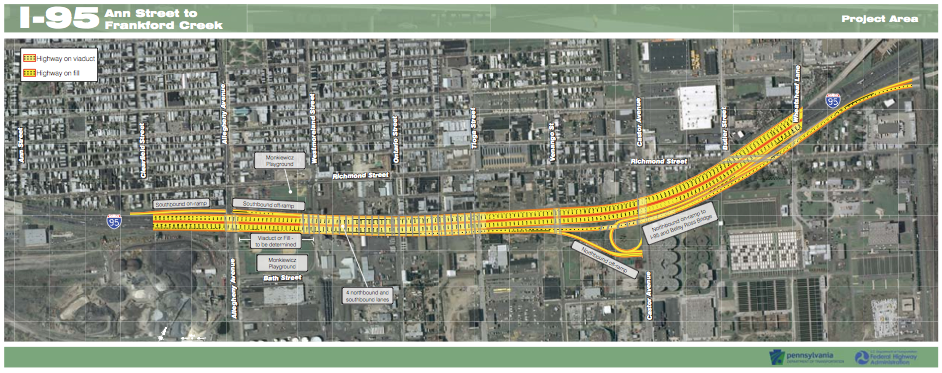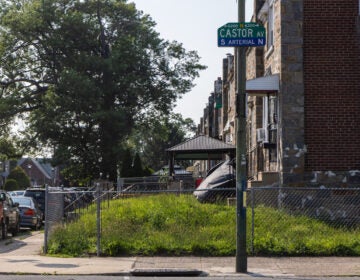PennDOT plans Ann Street to Frankford Creek I-95 expansion

The last section of I-95 expansion in Philadelphia is going into preliminary design. Last week PennDOT held a public meeting to provide an overview of the changes in store for the Ann Street to Frankford Creek portion of I-95 and to gather public input.
Technically, the section actually runs from Clearfield Street to Wheatsheaf Ave. As part of the project, the northbound off ramp currently located at Westmoreland Ave. will be moved to Castor Avenue and a new northbound on ramp will provide a direct connection to both I-95 and the Betsy Ross Bridge.
Proposed local road improvements tied to the expansion project include:
- Restricting left turns from southbound Richmond Street at the intersection of Allegheny and Richmond
- Adding traffic signals at the intersections of Allegheny Ave. and Bath Street, Castor Ave. and the I-95 Interchange and Castor Ave. and Delaware Ave.
- Adding left turn lanes on eastbound Ontario Street at Aramingo Ave. and eastbound Venango Street at Aramingo Ave.
- Optimizing signal timing on Aramingo Ave. from Clearfield Street to Wheatsheaf Lane, Castor Ave. from the I-95 Interchange to Aramingo Ave. and Allegheny Ave. from Bath Street to Aramingo Ave.
- Repaving and roadwork on Allegheny Ave. from Bath Street to Delaware Ave., on Delaware Ave. from Allegheny to Castor Ave. and on Castor Ave. from Delaware Ave. to the I-95 Interchange
Perhaps the biggest change that will come to the community bifurcated by this section of I-95 is that PennDOT is considering placing the portion of I-95 that runs through Monkiewicz Playground on a viaduct. When I-95 was built, the highway split the playground in two. By placing the section from Allegheny Ave. to Westmoreland Street on a viaduct, PennDOT may be able to return some of that space to Monkiweicz Playground.
“At this point we have the opportunity to kind of fix some of that damage that was done,” said PennDOT project manager Pamela Conti.
PennDOT is still deciding whether or not to use the viaduct option, and Conti reminded those at the public meeting to consider who would maintain the section below the highway and what kind of design and uses they would want under the viaduct.
The community and PennDOT would have the options of opening one bay or about 100 feet, two bays or about 200 feet or the entire section.
“You have to keep in mind, with the park you don’t have a whole lot of headroom,” Conti said. “The highway is going to be between 16 and 19 feet high … It’s also not going to get much sunlight.”
She suggested some uses and features for neighbors and park goers to consider, such as a market space or a skate park and some sort of “artsy” lighting.
As part of its preliminary design, PennDOT will look at noise levels. If the levels are above average readings, PennDOT will consider mitigation options like noise walls. In some sections of I-95, Conti said, residents did not want noise walls because they blocked the homeowners’ views. In other sections, PennDOT is designing walls with clear panels at the top to minimize the visual obstruction. Conti said if noise walls are used in this section, PennDOT will work closely with the community.
PennDOT is also working with the Pennsylvania Historical and Museum Commission to determine if the Port Richmond Historic District – the area bounded by the Philadelphia/Trenton line, Somerset Street, Richmond Street and Tioga Street – is indeed historic and, if it is, to determine if the expansion project will impact the community.
This Ann Street to Frankford Creek I-95 section is in preliminary design now. Final design will start sometime in 2014. The local road improvements will begin in 2017, and the actual I-95 expansion construction will start in 2020.
WHYY is your source for fact-based, in-depth journalism and information. As a nonprofit organization, we rely on financial support from readers like you. Please give today.




